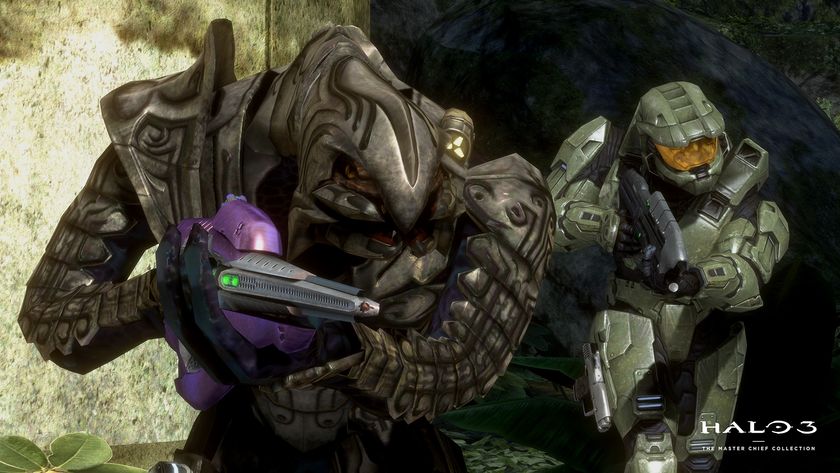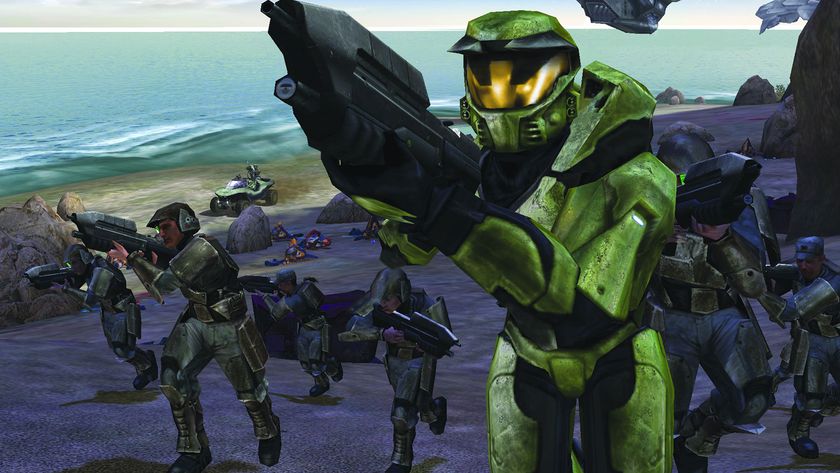Love it or hate it, gaming wouldn't be the same without Halo
Spartans never die
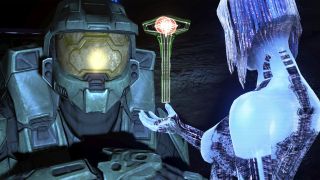
Halo isn't, and has never been, an original series. It wasn't the first shooter, even on console. It wasn't the first to have online multiplayer. It wasn't even the first game about an armored marine and his trusty AI companion battling aliens in outer space - by Bungie. As its decriers will point out time and time again, Halo really didn't do much of anything first.
But we don't give that argument much weight. Halo may not have beat every other game to the punch on multiplayer or transformative health bars, but it did something perhaps even more valuable: it put them out there, in one unifying package, in a way that had a meteoric impact on the entire shape of gaming. Like it, love it, or want to strap every disc you can find to a bottle rocket and send Master Chief to the moon, Halo has left a mark on games that's worth remembering and celebrating. In honor of the release of Halo 5: Guardians, we want to do exactly that: celebrate the places where Halo has had the biggest impact on the gaming world, even if it just brought some already great ideas into the light.
7. Masked mystery men
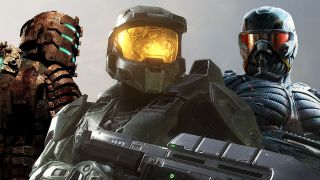
What Halo did: Samus might take issue with Master Chief claiming to be the first mysterious masked protagonist, but make no mistake: because of his clever costume design, sparse yet strangely magnetic voice performance, and tantalizingly incomplete origin story, Master Chief was the character that made facelessness so fashionable at the opening of the 21st century.
What the industry has done since: Realizing that a cool, shiny helmet is a hell of a lot easier to render than a realistically animated face, dozens of developers have copied Halo's "blank slate" formula. Isaac from Dead Space comes to mind immediately, but the gaming world is littered with lesser-known versions too, like the protagonists of Haze and Crysis 2. Even Bungie itself has dipped back into that design pool with Destiny's intermittently masked heroes. And even when the main character doesn't wear a mask themselves, you can bet that anyone in the game who does is going to show up on the cover. It was a simple idea design idea that created an icon, so it's no wonder other studios have wanted to get in on that action.
6. Collectibles worth collecting
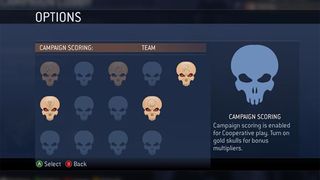
What Halo did: The fifteen skulls in Halo 2 and thirteen skulls in Halo 3 are no ordinary collectibles. Tucked away in nearly impossible-to-reach corners of each campaign mission, and often only reachable through very esoteric means, they are so well hidden that most players weren't aware of their existence until weeks after launch. More importantly, the skulls actually did something such as increase the difficulty of the game or change the dialogue making all the trouble worthwhile.
What the industry has done since: Collectibles have replaced cheats. Putting them in your game is as necessary as remembering to add graphics players simply expect to find them, and are disappointed when they don't. Some titles only reward you with Trophies or Achievements, but the most popular have learned from Halo - if the collectible hunt is elaborate enough, people will play and talk about your game for much, much longer. The Riddler Challenges in Batman: Arkham Asylum might be the most successful replication, but certainly not the sole example.
5. Multiplayer
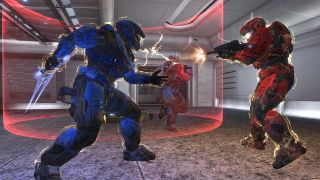
What Halo did: Like we said in the intro, Halo obviously didn't invent multiplayer. But the first console game to incorporate local system-link in addition to split screen competition? Halo did that. The first console game to inspire friends to lug their monitors and rigs to each other's houses for nightly LAN parties? Halo did that too. The first console game to make online matchmaking a breeze? Halo (well, technically Halo 2) did that. And the first game to introduce us to foul-mouthed, trash-talking, teabagging 12 year-olds? Hey, we never promised every influence would be good. Just important.
Sign up to the 12DOVE Newsletter
Weekly digests, tales from the communities you love, and more
What the industry has done since: There's no denying Halo's role in pioneering and popularizing modern console multiplayer the kind that enables you to compete with people across the globe, not merely across your living room carpet. Gears of War, Killzone, Ghost Recon, Splinter Cell and many more online shooters are indebted to Bungie for blazing the way. The trend Halo ignited has reached outside the basic shooter, too. Would games such as Dead Space 2, BioShock 2 and Uncharted 2 still feel the need to add multiplayer if not for Master Chief? I say nay.
4. Vehicular combat
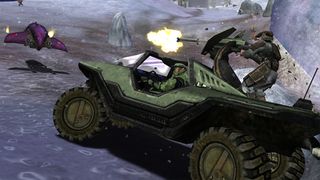
What Halo did: Once upon a time, there was the kingdom of shooters and the kingdom of car games, and never the twain did meet. Since sticking to first-person view while driving a car and trying to shoot would be an exercise in futility, it seemed like there wasn't a way to marry them in an effective way, or even a desire to do so. If you absolutely needed a vehicle, a prop usually did the trick - think the shuttle from Half-Life. Then Halo rolled into town and introduced vehicles like the ghost, the Scorpion tank, and the beloved Warthog, seamlessly shifting players into a third-person driving/shooting whenever they accessed them. The vehicles may have controlled like garbage early on, but Halo deserves all the credit in the world for getting the concept to work.
What the industry has done since: Turns out players really like controlling vehicles, or at least having some way to move around faster than the speed of sprint, so these modes of transportation have become nearly ubiquitous in first-person shooters. Whether its the sparrows in Destiny, Battlefield's helicopters, or a stray runner in Borderlands, they're all touched by Halo. The industry has admittedly adjusted over time, creating more games where you stay in first-person mode while zipping around (Far Cry 4 and BioShock Infinite come to mind), and that's great. It means the industry is evolving even more from that base that Halo began.
3. Focus on the community

What Halo did: Bungie understands that finishing and shipping a game is only the first step. If you want to build an empire, you also have to give the fans tools to extend the experience. This began with multiplayer, but eventually spread much farther. Bungie gave the fans Custom Games, allowing them to design their own modes (some of which were elevated to official modes in later games); Forge, letting them draw up brand new maps; and Saved Films and Halo Waypoint, giving them the ability to their own movies and screenshots. And when someone made something genuinely spectacular with those tools, like the folks behind Red vs Blue? Far from slapping them with a takedown notice, Bungie incorporated them into official ads, announcements, and community celebrations. That might not have been unusual for the PC space at the time, but for consoles, it was virtually unheard of.
What the industry has done since: Although we can't think of many other companies that engage their fans with the same degree of respect and appreciation as Bungie, the rest of the industry has been trying to catch up for years. The first Call of Duty: Black Ops includes a Theater mode to encourage machinima like Red vs Blue, the fate of Gears of War 3's Clay Carmine was famously decided by a public vote, and BioShock Infinite developers weren't shy about paying fans for designs they liked. Halo proved that the gap between developers and creative fans wasn't hard to bridge, and the whole industry has been better for it.
2. Recharging health

What Halo did: Remember health packs? Those were fun, weren't they? And pretty damn common in the shooters of yore like Doom, Wolfenstein, and Duke Nukem, where you had to depend on those packs to keep your single health bar filled. A few games tried out a regenerating health system, like MIDI Maze and Faceball 2000, but they weren't popular enough to bring the concept to mainstream attention. This is where Halo: CE comes in, but not with a straight-regenerating health system as some people falsely remember: Halo: CE had a regenerating shield that created a layer over your health bar as a primary means of defense. That's a bit of a well actually point though; Halo: CE's system paved the way for Halo 2 to go full-regeneration, and even if the series has bounced back and forth between the two setups several times, the basic idea is still there: crouch in the corner for a while and everything will be okay.
What the industry has done since: Name one first-person shooter made in the last five years that doesn't use something like this system. Call of Duty does it, Battlefield does it, Destiny, Gears of War, and Deus Ex all do it. While they vary on whether they take the Halo: CE or 2 approach, it's nonetheless clear how Halo brought both into the public conscience.
1. Standard FPS controls

What Halo did: Back in the day, first-person shooters felt like the Wild West of gaming. There were no standards for how they should control when it came to console, forcing you to learn a new (usually clunky) setup every time you got a new game. That confusion kept the FPS from thriving on console and made it a genre beholden to the PC. And then came Halo. Suddenly you had two weapons max to work with at any given time, grenades were controlled with the trigger buttons, and you had to get good at using two joysticks to handle your character or spend most of your time running into walls. Halo may not have invented most of these ideas, instead pulling from a slew of other games like a digital Alexander the Great, but it made a call and stuck to those guns through the entire series.
What the industry has done since: These days the weapon-wheel is virtually a novelty for first-person shooters, and any FPS that controls with a single joystick is almost inherently retro. Halo's scheme worked so well that the industry has long since adopted it as a standard, creating the console world's true answer to the mouse and keyboard. While it took some time to catch on, in 2015 you'll feel Halo's influence every time you pick up a controller and aim your in-game gun.
Former Associate Editor at GamesRadar, Ashley is now Lead Writer at Respawn working on Apex Legends. She's a lover of FPS titles, horror games, and stealth games. If you can see her, you're already dead.

